Machine Learning for the Sustainable Management of Depth Prediction and Load Optimization in River Convoys: An Amazon Basin Case Study
Abstract
1. Introduction
2. Literature Review
2.1. Importance of Inland Waterway Transportation
2.2. Navigation Challenges
2.3. Seasonal Variability of Water Levels
2.4. Influence of Precipitation on Hydrological Analyses
2.5. Use of Neural Networks in Hydrology
3. Materials and Methods
3.1. Water Level Forecast
- i.
- Input–Output mapping: The model takes historical water level data (input) as well as lagged and differentiated variables to better capture the cyclical nature of water levels. The historical data serve as a foundation for understanding patterns in river depth changes over time. By using these inputs, the model attempts to map them to the corresponding output, which is the predicted water level for future periods.
- ii.
- Layered neural network structure: The MLP consists of multiple layers of neurons (as mentioned, two intermediate layers in the MLP16 model). Each layer processes input data to extract features and patterns. The neurons within each layer are connected by weights, which represent the strength of the correlation between input data and output predictions. During training, these weights are adjusted to reduce the error between the predicted and actual water levels.
- iii.
- Correlation through training: The model is trained using backpropagation, where errors from the output layer (the difference between predicted and actual water levels) are propagated back through the network. This process updates the weights between the neurons, allowing the model to gradually learn the correlations between the input data and the correct output (future water levels). The goal is to minimize prediction errors, facilitating better correlation between the input historical data and the predicted output.
- iv.
- Normalization and lagging for correlation: To improve the model’s ability to correlate data, the input variables are normalized (using techniques like MinMaxScaler) and lagged. Normalization ensures that the input data are scaled consistently, preventing the model from being biased toward variables with larger magnitudes. Lagging allows the model to capture temporal dependencies by considering water level data from previous time periods as input, thus better correlating the cyclic seasonal nature of water levels with the output predictions.
- v.
- Hidden layers and nonlinear relationships: The hidden layers in the MLP model allowed the network to capture both linear and nonlinear correlations between the input and output. This was crucial for water level prediction, as the relationship between environmental factors (such as precipitation, river flow, and seasonal changes) and water levels is often nonlinear. The neurons in these hidden layers applied activation functions (e.g., ReLU) to transform the input data and establish the correlation between complex variables.
- vi.
- Model convergence: Convergence in the model is achieved when the correlation between input data and predicted output stabilizes, meaning that further adjustments to the weights do not significantly reduce prediction errors. The Adam optimizer is used during training to dynamically adjust the learning rate, helping the model converge efficiently by finding the optimal weight values that correlate input patterns with accurate predictions.
3.1.1. Definition of Temporal and Variational Correlation
3.1.2. Data Normalization
3.1.3. Parameters Definition
3.1.4. Training Process
3.1.5. Variable Parameters Definition
3.1.6. Metrics Definitions
3.2. Vessel Hydrostatic Modeling
Hydrostatic Properties
3.3. Planialtimetric Conditions
3.3.1. Horizontal Dimensions
3.3.2. Under-Keel Clearance and SQUAT
4. Case Study
4.1. Models’ Water Level Forecast
4.2. Model Considerations
- Dynamic environmental and human factors: While the model focused on seasonal variations, real-world depths can be affected by sedimentation, dredging, and extreme weather events that may not align with seasonal patterns.
- Adaptive UKC and vessel configuration: The model assumed fixed parameters for UKC and convoy setup, which, in practice, may require adjustment depending on real-time river conditions and vessel behavior.
4.3. Project Vessel
5. Results and Discussions
5.1. Month Water Level Forecast
5.2. Predicted Cargo Capacities
5.3. Navigation Restrictions
6. Conclusions
Author Contributions
Funding
Institutional Review Board Statement
Informed Consent Statement
Data Availability Statement
Acknowledgments
Conflicts of Interest
References
- Taylor, N.B. Book Review. J. Transp. Geogr. 2018, 69, 307. [Google Scholar] [CrossRef]
- Williamsson, J.; Rogerson, S.; Santén, V. Business Models for Dedicated Container Freight on Swedish Inland Waterways. Res. Transp. Bus. Manag. 2020, 35, 100466. [Google Scholar] [CrossRef]
- Medda, F.; Trujillo, L. Short-Sea Shipping: An Analysis of Its Determinants. Marit. Policy Manag. 2010, 37, 285–303. [Google Scholar] [CrossRef]
- Suárez-Alemán, A.; Trujillo, L.; Medda, F. Short Sea Shipping as Intermodal Competitor: A Theoretical Analysis of European Transport Policies. Marit. Policy Manag. 2015, 42, 317–334. [Google Scholar] [CrossRef]
- Wiegmans, B.; Konings, R. Intermodal Inland Waterway Transport: Modelling Conditions Influencing Its Cost Competitiveness. Asian J. Shipp. Logist. 2015, 31, 273–294. [Google Scholar] [CrossRef]
- Solomon, B.; Otoo, E.; Boateng, A.; Ato Koomson, D. Inland Waterway Transportation (IWT) in Ghana: A Case Study of Volta Lake Transport. Int. J. Transp. Sci. Technol. 2020, 10, 20–33. [Google Scholar] [CrossRef]
- Tvedt, T. Why England and Not China and India? Water Systems and the History of the Industrial Revolution. J. Glob. Hist. 2010, 5, 29–50. [Google Scholar] [CrossRef][Green Version]
- Sakalis, G.N.; Frangopoulos, C.A. Intertemporal Optimization of Synthesis, Design and Operation of Integrated Energy Systems of Ships: General Method and Application on a System with Diesel Main Engines. Appl. Energy 2018, 226, 991–1008. [Google Scholar] [CrossRef]
- Ahadi, K.; Sullivan, K.M.; Mitchell, K.N. Budgeting Maintenance Dredging Projects under Uncertainty to Improve the Inland Waterway Network Performance. Transp. Res. Part E Logist. Transp. Rev. 2018, 119, 63–87. [Google Scholar] [CrossRef]
- Segovia, P.; Rajaoarisoa, L.; Nejjari, F.; Duviella, E.; Puig, V. Model Predictive Control and Moving Horizon Estimation for Water Level Regulation in Inland Waterways. J. Process Control 2019, 76, 1–14. [Google Scholar] [CrossRef]
- Teixeira, C.A.N.; Rocio, M.A.R.; do Amaral, A.P.; d’Oliveira, L.A.S. Brazilian Inland Navigation. Available online: https://web.bndes.gov.br/bib/jspui/bitstream/1408/15380/3/BS47__NavegacaoInterior_P.pdf (accessed on 4 May 2024).
- Duldner-Borca, B.; Hoerandner, L.; Bieringer, B.; Khanbilverdi, R.; Putz-Egger, L.-M. New Design Options for Container Barges with Improved Navigability on the Danube. Sustainability 2024, 16, 4613. [Google Scholar] [CrossRef]
- Shi, J.; Bai, T.; Zhao, Z.; Tan, H. Driving Economic Growth through Transportation Infrastructure: An In-Depth Spatial Econometric Analysis. Sustainability 2024, 16, 4283. [Google Scholar] [CrossRef]
- Hunt, J.D.; Pokhrel, Y.; Chaudhari, S.; Mesquita, A.L.A.; Nascimento, A.; Leal Filho, W.; Biato, M.F.; Schneider, P.S.; Lopes, M.A. Challenges and Opportunities for a South America Waterway System. Clean. Eng. Technol. 2022, 11, 100575. [Google Scholar] [CrossRef]
- Vilarinho, A.; Liboni, L.B.; Cezarino, L.O.; Micco, J.D.; Mommens, K.; Macharis, C. Challenges and Opportunities for the Development of Inland Waterway Transport in Brazil. Sustainability 2024, 16, 2136. [Google Scholar] [CrossRef]
- Chen, Y.; Zhou, B.; Pan, X.; Zhang, H.; Qian, H.; Cheng, W.; Yin, W. Assessing Waterway Carrying Capacity from a Multi-Benefit Synergistic Perspective. Sustainability 2024, 16, 4379. [Google Scholar] [CrossRef]
- Lalla-Ruiz, E.; Shi, X.; Voß, S. The Waterway Ship Scheduling Problem. Transp. Res. Part D Transp. Environ. 2018, 60, 191–209. [Google Scholar] [CrossRef]
- Lindstad, H.E.; Sandaas, I. Emission and Fuel Reduction for Offshore Support Vessels through Hybrid Technology. J. Ship Prod. Des. 2016, 32, 195–205. [Google Scholar] [CrossRef]
- Ling-Chin, J.; Roskilly, A.P. Investigating the Implications of a New-Build Hybrid Power System for Roll-on/Roll-off Cargo Ships from a Sustainability Perspective—A Life Cycle Assessment Case Study. Appl. Energy 2016, 181, 416–434. [Google Scholar] [CrossRef]
- Dedes, E.K.; Hudson, D.A.; Turnock, S.R. Investigation of Diesel Hybrid Systems for Fuel Oil Reduction in Slow Speed Ocean Going Ships. Energy 2016, 114, 444–456. [Google Scholar] [CrossRef]
- Talluri, L.; Nalianda, D.K.; Kyprianidis, K.G.; Nikolaidis, T.; Pilidis, P. Techno Economic and Environmental Assessment of Wind Assisted Marine Propulsion Systems. Ocean Eng. 2016, 121, 301–311. [Google Scholar] [CrossRef]
- Almaz, O.A.; Altiok, T. Simulation Modeling of the Vessel Traffic in Delaware River: Impact of Deepening on Port Performance. Simul. Model. Pract. Theory 2012, 22, 146–165. [Google Scholar] [CrossRef]
- Fathoni, M.; Pradono, P.; Syabri, I.; Shanty, Y.R. Analysis to Assess Potential Rivers for Cargo Transport in Indonesia. Transp. Res. Procedia 2017, 25, 4544–4559. [Google Scholar] [CrossRef]
- Kamal, N.; Sadek, N. Evaluating and Analyzing Navigation Efficiency for the River Nile (Case Study: Ensa-Naga Hamady Reach). Ain Shams Eng. J. 2018, 9, 2649–2669. [Google Scholar] [CrossRef]
- Kuo, C.C.; Gan, T.Y.; Higuchi, K. Evaluation of Future Streamflow Patterns in Lake Simcoe Subbasins Based on Ensembles of Statistical Downscaling. J. Hydrol. Eng. 2017, 22, 04017028. [Google Scholar] [CrossRef]
- Scheepers, H.; Wang, J.; Gan, T.Y.; Kuo, C.C. The Impact of Climate Change on Inland Waterway Transport: Effects of Low Water Levels on the Mackenzie River. J. Hydrol. 2018, 566, 285–298. [Google Scholar] [CrossRef]
- Sugeng, S. Dampak pelayaran kapal laut di alur Sungai Musi. Gema Teknol. 2010, 16, 49–56. [Google Scholar] [CrossRef]
- Zuo, L.; Lu, Y.; Liu, H.; Ren, F.; Sun, Y. Responses of River Bed Evolution to Flow-Sediment Process Changes after Three Gorges Project in Middle Yangtze River: A Case Study of Yaojian Reach. Water Sci. Eng. 2020, 13, 124–135. [Google Scholar] [CrossRef]
- Luo, X.; Zhang, W.; Chen, S.; Feng, X.; Ji, X.; Xu, Y. Evolution of Reversal of the Lowest Low Waters in a Tidal River Network. J. Hydrol. 2020, 585, 124701. [Google Scholar] [CrossRef]
- Nasir, H.A.; Zhao, T.; Carè, A.; Wang, Q.J.; Weyer, E. Efficient River Management Using Stochastic MPC and Ensemble Forecast of Uncertain In-Flows. IFAC-PapersOnLine 2018, 51, 37–42. [Google Scholar] [CrossRef]
- Christodoulou, A.; Christidis, P.; Bisselink, B. Forecasting the Impacts of Climate Change on Inland Waterways. Transp. Res. Part D Transp. Environ. 2020, 82, 102159. [Google Scholar] [CrossRef]
- Nouasse, H.; Doniec, A.; Lozenguez, G.; Duviella, E.; Chiron, P.; Archimède, B.; Chuquet, K. Constraint Satisfaction Problem Based on Flow Graph to Study the Resilience of Inland Navigation Networks in a Climate Change context. IFAC-PapersOnLine 2016, 49, 331–336. [Google Scholar] [CrossRef]
- Vidyalashmi, K.; Chandana L, M.; Nandana, J.S.; Azhikodan, G.; Priya, K.L.; Yokoyama, K.; Paramasivam, S.K. Analysing the Performance of the NARX Model for Forecasting the Water Level in the Chikugo River Estuary, Japan. Environ. Res. 2024, 251, 118531. [Google Scholar] [CrossRef] [PubMed]
- Liu, W.-C.; Huang, W.-C. Evaluation of Deep Learning Computer Vision for Water Level Measurements in Rivers. Heliyon 2024, 10, e25989. [Google Scholar] [CrossRef]
- Li, G.; Zhu, H.; Jian, H.; Zha, W.; Wang, J.; Shu, Z.; Yao, S.; Han, H. A Combined Hydrodynamic Model and Deep Learning Method to Predict Water Level in Ungauged Rivers. J. Hydrol. 2023, 625, 130025. [Google Scholar] [CrossRef]
- Wang, X.; Xia, J.; Zhou, M.; Deng, S.; Li, Q. Assessment of the Joint Impact of Rainfall and River Water Level on Urban Flooding in Wuhan City, China. J. Hydrol. 2022, 613, 128419. [Google Scholar] [CrossRef]
- Moges, D.M.; Kmoch, A.; Uuemaa, E. Application of Satellite and Reanalysis Precipitation Products for Hydrological Modeling in the Data-Scarce Porijõgi Catchment, Estonia. J. Hydrol. Reg. Stud. 2022, 41, 101070. [Google Scholar] [CrossRef]
- Sikora de Souza, V.A.; Moreira, D.M.; Rotunno Filho, O.C.; Rudke, A.P. Extreme Rainfall Events in Amazonia: The Madeira River Basin. Remote Sens. Appl. Soc. Environ. 2020, 18, 100316. [Google Scholar] [CrossRef]
- Ahmed, K.; Shahid, S.; Nawaz, N.; Khan, N. Modeling Climate Change Impacts on Precipitation in Arid Regions of Pakistan: A Non-Local Model Output Statistics Downscaling Approach. Theor. Appl. Climatol. 2019, 137, 1347–1364. [Google Scholar] [CrossRef]
- Ahmed, K.; Shahid, S.; Wang, X.; Nawaz, N.; Khan, N. Evaluation of Gridded Precipitation Datasets over Arid Regions of Pakistan. Water 2019, 11, 210. [Google Scholar] [CrossRef]
- Latif, M.; Syed, F.; Hannachi, A. Rainfall Trends in the South Asian Summer Monsoon and Its Related Large-Scale Dynamics with Focus over Pakistan. Clim. Dyn. 2017, 48, 3565–3581. [Google Scholar] [CrossRef]
- Dinku, T.; Funk, C.; Peterson, P.; Maidment, R.; Tadesse, T.; Gadain, H.; Ceccato, P. Validation of the CHIRPS Satellite Rainfall Estimates over Eastern Africa. Q. J. R. Meteorol. Soc. 2018, 144, 292–312. [Google Scholar] [CrossRef]
- Funk, C.; Peterson, P.; Landsfeld, M.; Pedreros, D.; Verdin, J.; Shukla, S.; Husak, G.; Rowland, J.; Harrison, L.; Hoell, A.; et al. The Climate Hazards Infrared Precipitation with Stations—A New Environmental Record for Monitoring Extremes. Sci. Data 2015, 2, 150066. [Google Scholar] [CrossRef] [PubMed]
- Zambrano, F.; Wardlow, B.; Tadesse, T.; Lillo-Saavedra, M.; Lagos, O. Evaluating Satellite-Derived Long-Term Historical Precipitation Datasets for Drought Monitoring in Chile. Atmos. Res. 2017, 186, 26–42. [Google Scholar] [CrossRef]
- Seo, Y.J.; Ha, M.H.; Yang, Z.; Bhattacharya, S. The Ship Management Firm Selection: The Case of South Korea. Asian J. Shipp. Logist. 2018, 34, 256–265. [Google Scholar] [CrossRef]
- Le Carrer, N.; Ferson, S.; Green, P.L. Optimising Cargo Loading and Ship Scheduling in Tidal Areas. Eur. J. Oper. Res. 2020, 280, 1082–1094. [Google Scholar] [CrossRef]
- Li, B.; Yang, G.; Wan, R.; Dai, X.; Zhang, Y. Comparison of Random Forests and Other Statistical Methods for the Prediction of Lake Water Level: A Case Study of the Poyang Lake in China. Hydrol. Res. 2016, 47, 69–83. [Google Scholar] [CrossRef]
- Khan, M.Y.A.; Hasan, F.; Panwar, S.; Chakrapani, G.J. Neural Network Model for Discharge and Water-Level Prediction for Ramganga River Catchment of Ganga Basin, India. Hydrol. Sci. J. 2016, 61, 2084–2095. [Google Scholar] [CrossRef]
- Phan, T.-T.-H.; Nguyen, X.H. Combining Statistical Machine Learning Models with ARIMA for Water Level Forecasting: The Case of the Red River. Adv. Water Resour. 2020, 142, 103656. [Google Scholar] [CrossRef]
- Figueiredo, N.; Blanco, C. Simulação de Vazões e Níveis de Água Médios Mensais Para o Rio Tapajós Usando Modelos ARIMA. Rev. Bras. Recur. Hidr. 2014, 19, 111–126. [Google Scholar] [CrossRef]
- Barbosa, F.G.P.; de Figueiredo, N.M.; Filho, L.C.P.C.; Borges, H.M. Computational Tool for Sizing and Optimization of Planimetric Geometric Parameters of Inland Navigation Channels and of Port Access in Brazil. J. Waterw. Port Coast. Ocean Eng. 2021, 147, 04020044. [Google Scholar] [CrossRef]
- Garcia, F.C.C.; Retamar, A.E.; Javier, J.C. Development of a Predictive Model for On-Demand Remote River Level Nowcasting: Case Study in Cagayan River Basin, Philippines. In Proceedings of the 2016 IEEE Region 10 Conference (TENCON), Singapore, 22–25 November 2016; pp. 3275–3279. [Google Scholar]
- Wang, L.; Wu, B.; Zhu, Q.; Zeng, Y.-R. Forecasting Monthly Tourism Demand Using Enhanced Backpropagation Neural Network. Neural Process. Lett. 2020, 52, 2607–2636. [Google Scholar] [CrossRef]
- Li, T.; Wang, S.; Liu, Y.; Fu, B.; Gao, D. Reversal of the Sediment Load Increase in the Amazon Basin Influenced by Divergent Trends of Sediment Transport from the Solimões and Madeira Rivers. Catena 2020, 195, 104804. [Google Scholar] [CrossRef]
- Feng, X.; Ma, G.; Su, S.-F.; Huang, C.; Boswell, M.K.; Xue, P. A Multi-Layer Perceptron Approach for Accelerated Wave Forecasting in Lake Michigan. Ocean Eng. 2020, 211, 107526. [Google Scholar] [CrossRef]
- Hunasigi, P.; Jedhe, S.; Mane, M.; Patil-Shinde, V. Multilayer Perceptron Neural Network Based Models for Prediction of the Rainfall and Reference Crop Evapotranspiration for Sub-Humid Climate of Dapoli, Ratnagiri District, India. Acta Ecol. Sin. 2022, 43, 154–201. [Google Scholar] [CrossRef]
- Haykin, S.S. Neural Networks: A Comprehensive Foundation, 2nd ed.; Prentice Hall: Upper Saddle River, NJ, USA, 1999; ISBN 978-0-13-273350-2. [Google Scholar]
- Chen, C.-S.; Chen, B.P.-T.; Chou, F.N.-F.; Yang, C.-C. Development and Application of a Decision Group Back-Propagation Neural Network for Flood Forecasting. J. Hydrol. 2010, 385, 173–182. [Google Scholar] [CrossRef]
- Petrosyan, A.; Dereventsov, A.; Webster, C.G. Neural Network Integral Representations with the ReLU Activation Function. In Proceedings of the First Mathematical and Scientific Machine Learning Conference, Virtual, 16–19 August 2020; pp. 128–143. [Google Scholar]
- Schmidt-Hieber, J. Nonparametric Regression Using Deep Neural Networks with ReLU Activation Function. Ann. Stat. 2020, 48, 1875–1897. [Google Scholar] [CrossRef]
- Boob, D.; Dey, S.S.; Lan, G. Complexity of Training ReLU Neural Network. Discret. Optim. 2020, 44, 100620. [Google Scholar] [CrossRef]
- Lin, G.; Shen, W. Research on Convolutional Neural Network Based on Improved Relu Piecewise Activation Function. Procedia Comput. Sci. 2018, 131, 977–984. [Google Scholar] [CrossRef]
- Kingma, D.P.; Ba, J. Adam: A Method for Stochastic Optimization. arXiv 2017, arXiv:1412.6980. [Google Scholar]
- Azad, A.; Pirayesh, J.; Farzin, S.; Malekani, L.; Moradinasab, S.; Kisi, O. Application of Heuristic Algorithms in Improving Performance of Soft Computing Models for Prediction of Min, Mean and Max Air Temperatures. Eng. J. 2019, 23, 83–98. [Google Scholar] [CrossRef]
- Wang, J.; Shi, P.; Jiang, P.; Hu, J.; Qu, S.; Chen, X.; Chen, Y.; Dai, Y.; Xiao, Z. Application of BP Neural Network Algorithm in Traditional Hydrological Model for Flood Forecasting. Water 2017, 9, 48. [Google Scholar] [CrossRef]
- Abrahart, R.J.; White, S.M. Modelling Sediment Transfer in Malawi: Comparing Backpropagation Neural Network Solutions against a Multiple Linear Regression Benchmark Using Small Data Sets. Phys. Chem. Earth Part B Hydrol. Ocean. Atmos. 2001, 26, 19–24. [Google Scholar] [CrossRef]
- Wang, Z.; Sheng, H. Rainfall Prediction Using Generalized Regression Neural Network: Case Study Zhengzhou. In Proceedings of the 2010 International Conference on Computational and Information Sciences, Chengdu, China, 17–19 December 2010; pp. 1265–1268. [Google Scholar]
- Nourani, V. An Emotional ANN (EANN) Approach to Modeling Rainfall-Runoff Process. J. Hydrol. 2017, 544, 267–277. [Google Scholar] [CrossRef]
- Sahoo, B.B.; Jha, R.; Singh, A.; Kumar, D. Long Short-Term Memory (LSTM) Recurrent Neural Network for Low-Flow Hydrological Time Series Forecasting. Acta Geophys. 2019, 67, 1471–1481. [Google Scholar] [CrossRef]
- Valipour, M.; Banihabib, M.E.; Behbahani, S.M.R. Comparison of the ARMA, ARIMA, and the Autoregressive Artificial Neural Network Models in Forecasting the Monthly Inflow of Dez Dam Reservoir. J. Hydrol. 2013, 476, 433–441. [Google Scholar] [CrossRef]
- Kumar, U.A. Comparison of Neural Networks and Regression Analysis: A New Insight. Expert Syst. Appl. 2005, 29, 424–430. [Google Scholar] [CrossRef]
- Coulibaly, P.; Bobée, B.; Anctil, F. Improving Extreme Hydrologic Events Forecasting Using a New Criterion for Artificial Neural Network Selection. Hydrol. Process. 2001, 15, 1533–1536. [Google Scholar] [CrossRef]
- Barrass, C.B.; Derrett, D.R. Hydrostatic Curves and Values for Vessels Initially Having Trim by the Bow or by the Stern. In Ship Stability for Masters and Mates; Elsevier: Amsterdam, The Netherlands, 2012; pp. 235–240. ISBN 978-0-08-097093-6. [Google Scholar]
- Biran, A.; López-Pulido, R. Hydrostatic Curves. In Ship Hydrostatics and Stability; Elsevier: Amsterdam, The Netherlands, 2014; pp. 97–116. ISBN 978-0-08-098287-8. [Google Scholar]
- Tupper, E.C. Structures. In Introduction to Naval Architecture; Elsevier: Amsterdam, The Netherlands, 2013; pp. 299–341. ISBN 978-0-08-098237-3. [Google Scholar]
- Adland, R.; Jia, H.; Strandenes, S.P. The Determinants of Vessel Capacity Utilization: The Case of Brazilian Iron Ore Exports. Transp. Res. Part A Policy Pract. 2018, 110, 191–201. [Google Scholar] [CrossRef]
- Campos Filho, L.C.P.; Moura de Figueiredo, N.; Pantoja Barbosa, F.G.; Saavedra, R.d.S.; Filgueiras, T.; Pavão de Souza, P.A. Analysis of Geometric Conformation of the Lower Tapajós Stretch Using Navigation Channel Sizing Software; Galoa: Brasília, Brazil, 2019. [Google Scholar]
- PIANC. Harbour Approach Channels Design Guidelines, PIANC Report No. 121; PIANC: Brussels, Belgium, 2014; ISBN 978-2-87223-210-9. [Google Scholar]
- Briggs, M.J.; Vantorre, M.; Uliczka, K.; Debaillon, P. Prediction of Squat for Underkeel Clearance. In Handbook of Coastal and Ocean Engineering; World Scientific: Singapore, 2018; pp. 1029–1080. ISBN 978-981-320-401-0. [Google Scholar]
- Briggs, M.J.; Silver, A.; Kopp, P.J.; Santangelo, F.A.; Mathis, I.A. Validation of a Risk-Based Numerical Model for Predicting Deep-Draft Underkeel Clearance. J. Waterw. Port Coast. Ocean Eng. 2013, 139, 267–276. [Google Scholar] [CrossRef]
- Eryuzlu, N.E.; Cao, Y.L.; D’Agnolo, F. Underkeel Requirements for Large Vessels in Shallow Waterways. In Proceedings of the 28th International Navigation Congress, Sevilla, Spain, 10 May 1994; pp. 17–25. [Google Scholar]
- Capitania Fluvial de Porto Velho. Normas e Procedimentos específicos para a jurisdição da Capitania Fluvial de Porto Velho. Available online: https://www.marinha.mil.br/cfpv/?q=conteudo/normas-e-procedimentos-especificos-para-jurisdicao-da-capitania-fluvial-de-porto-velho (accessed on 4 May 2024).

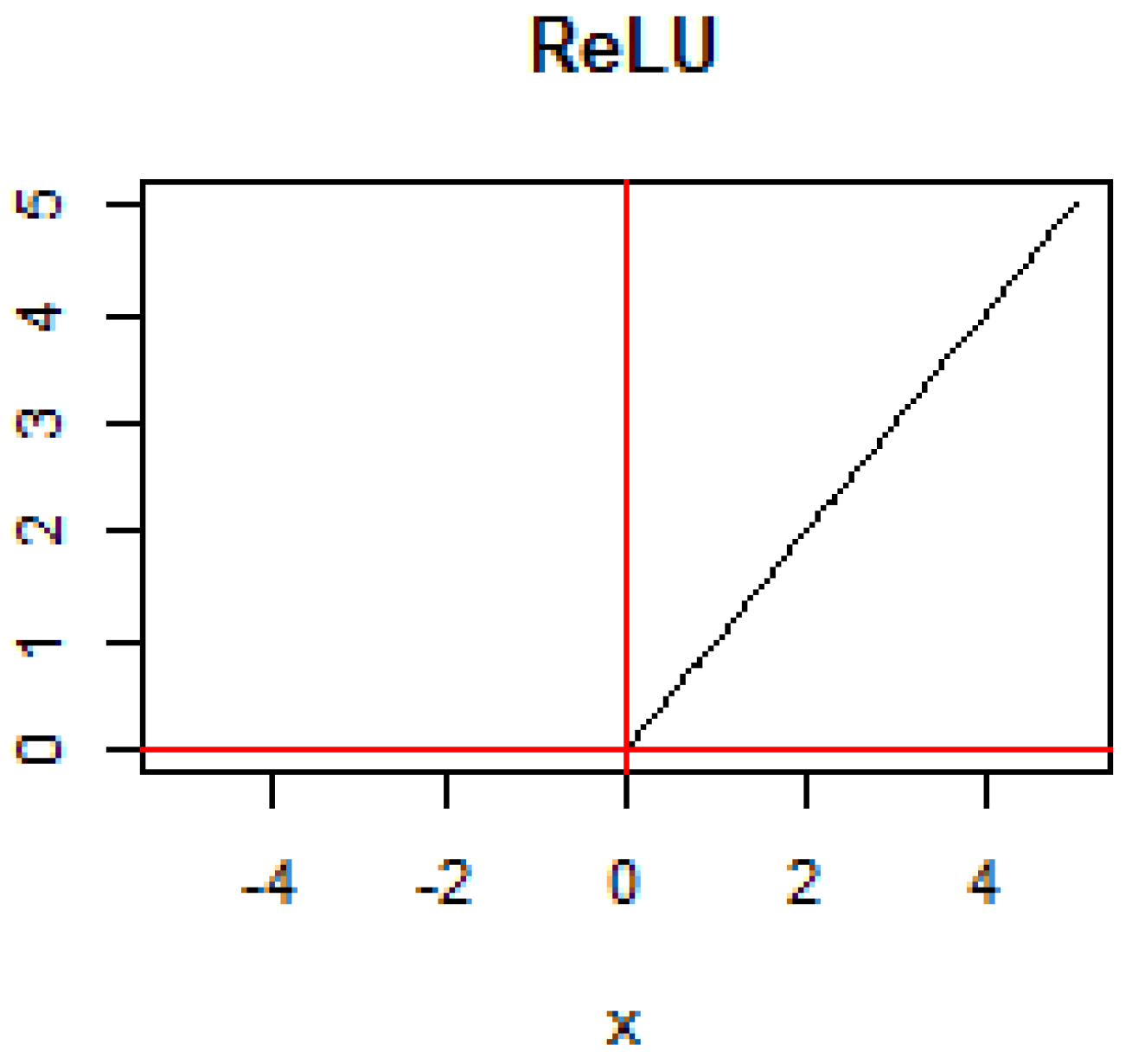
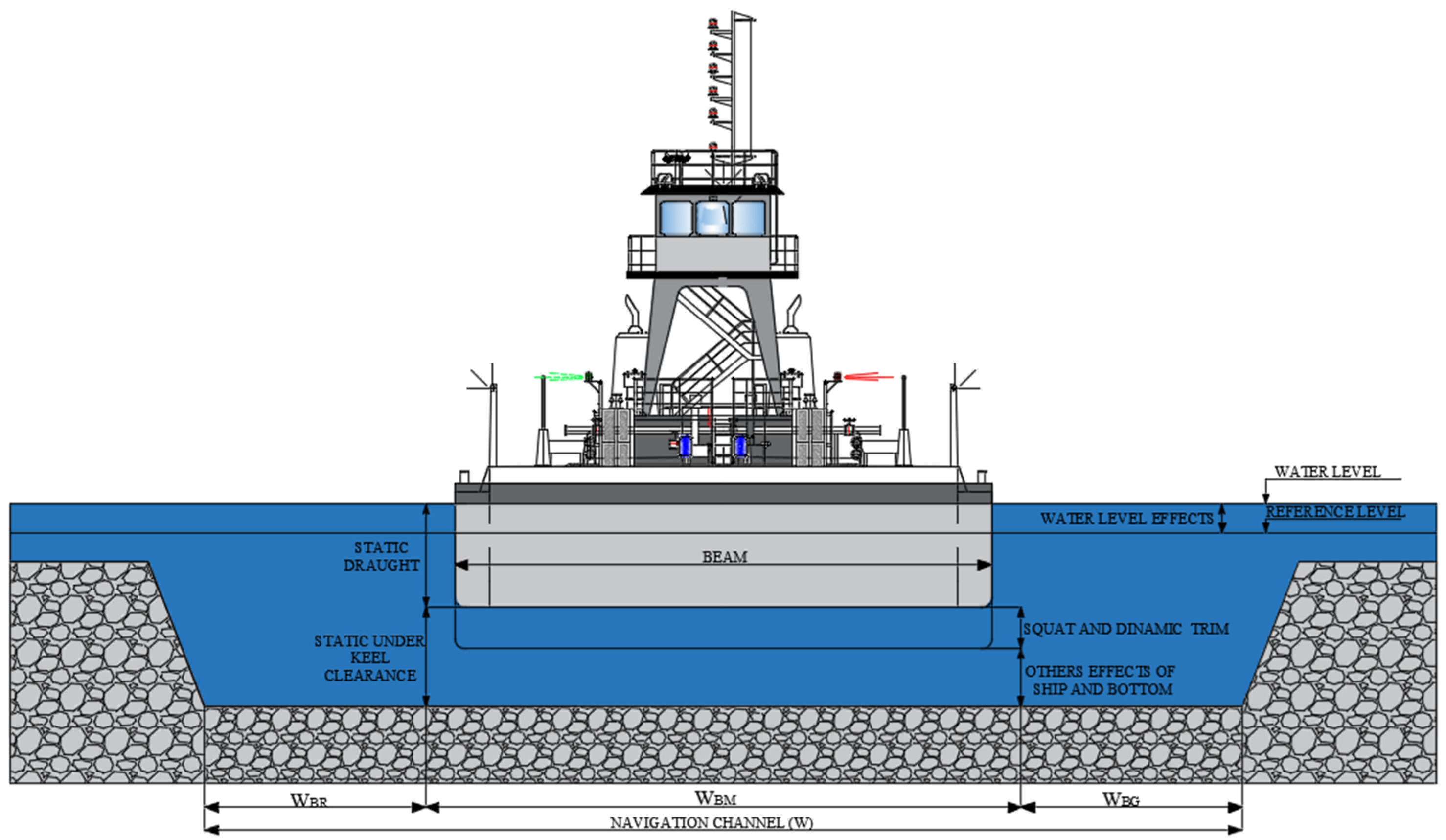
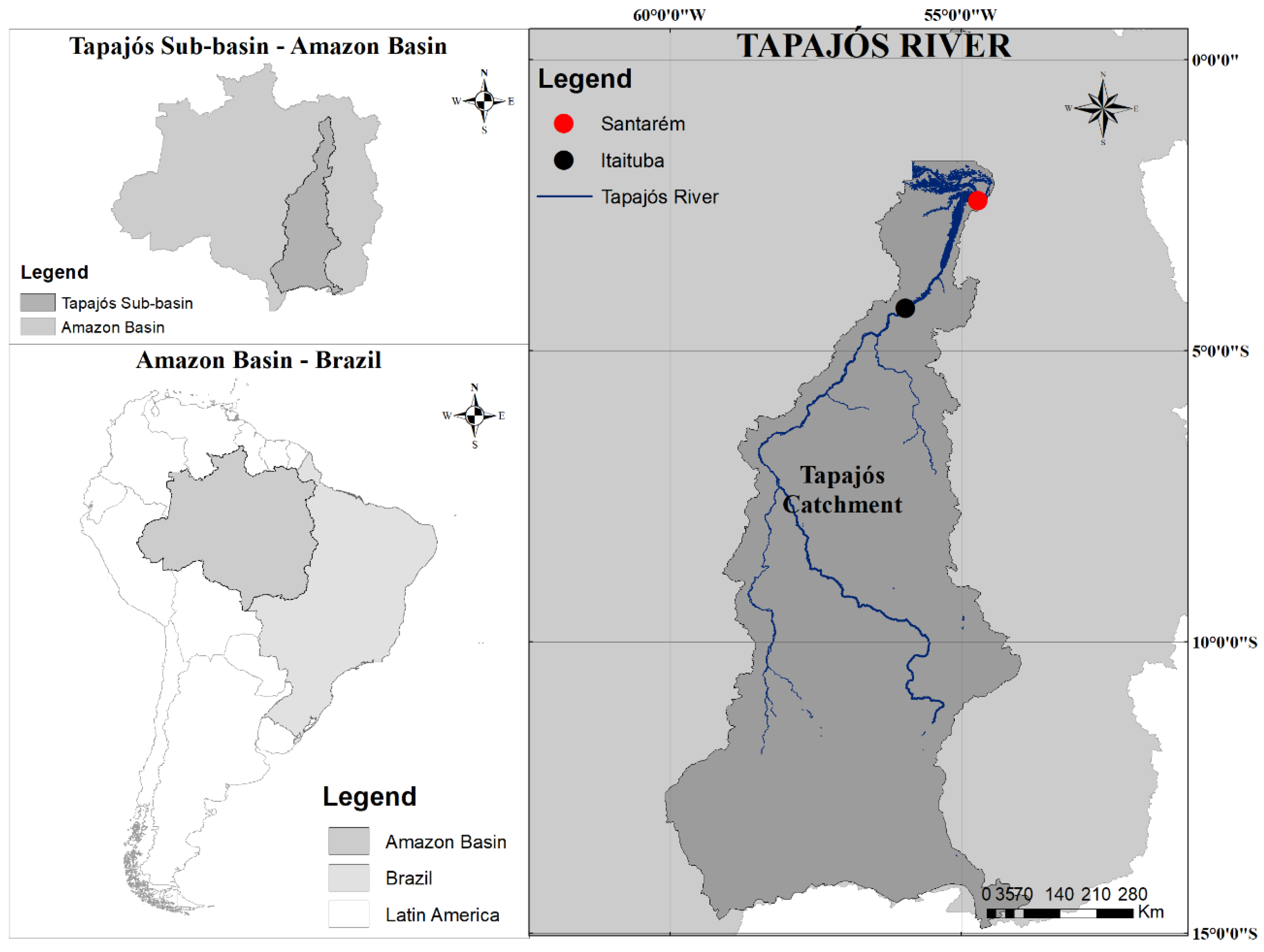
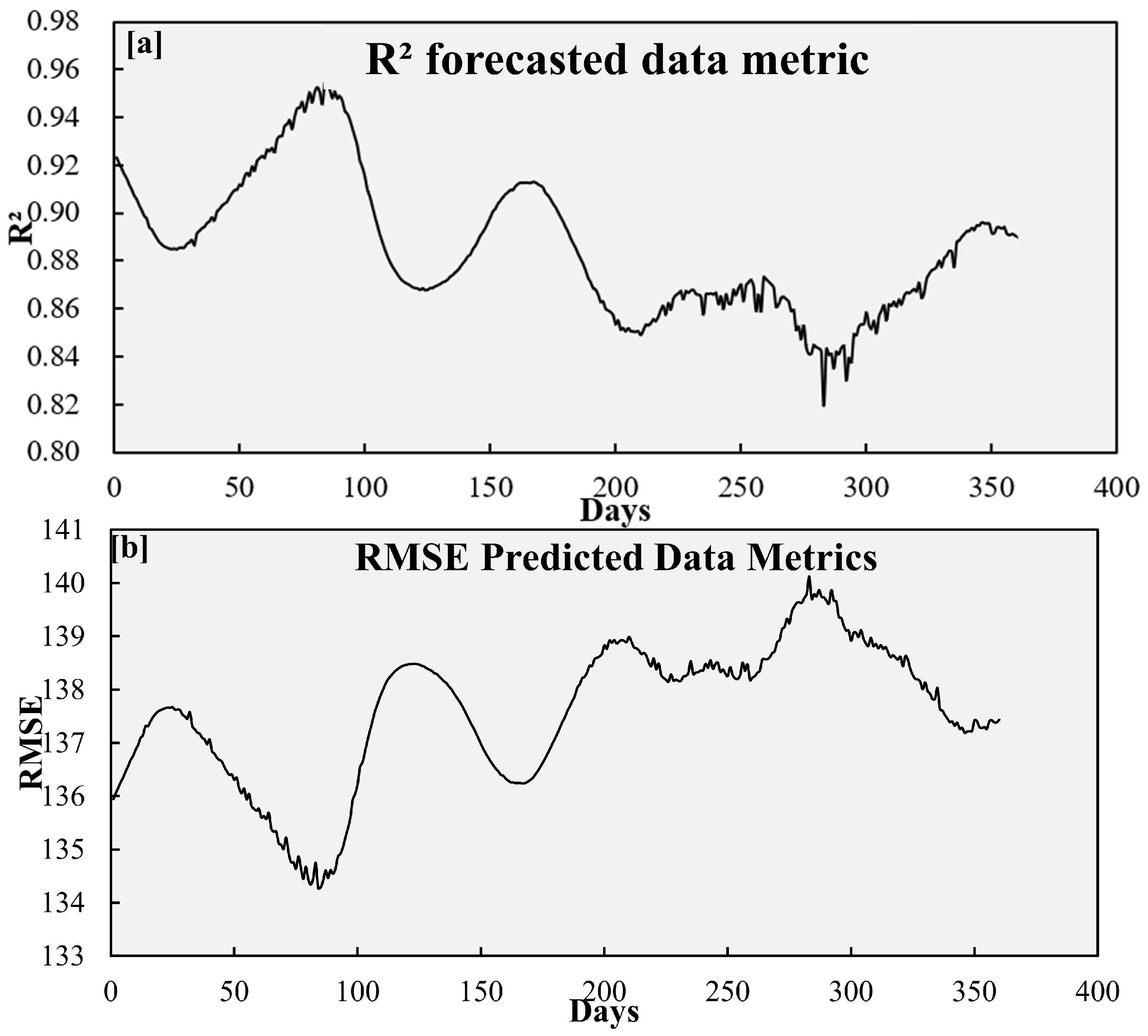
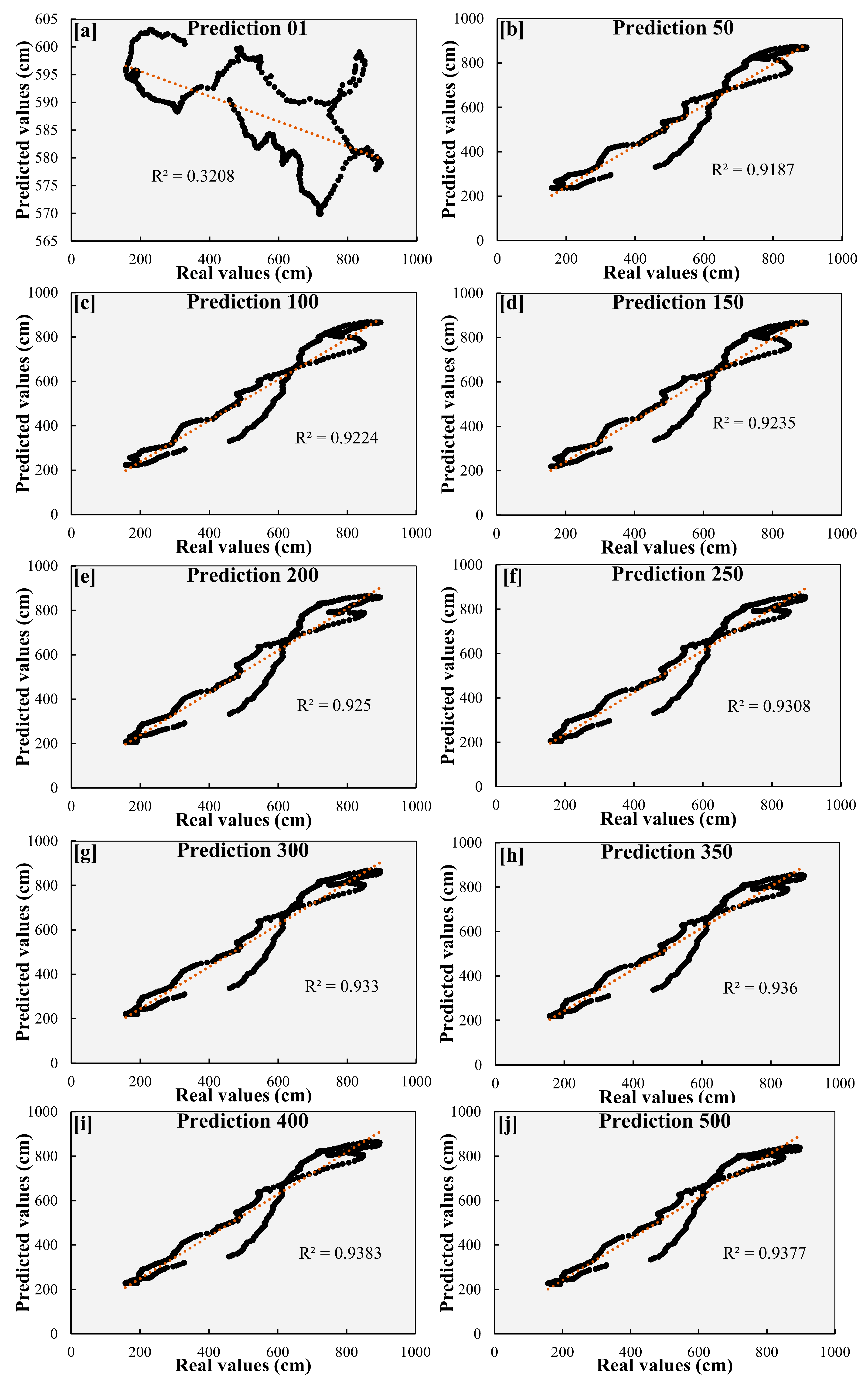
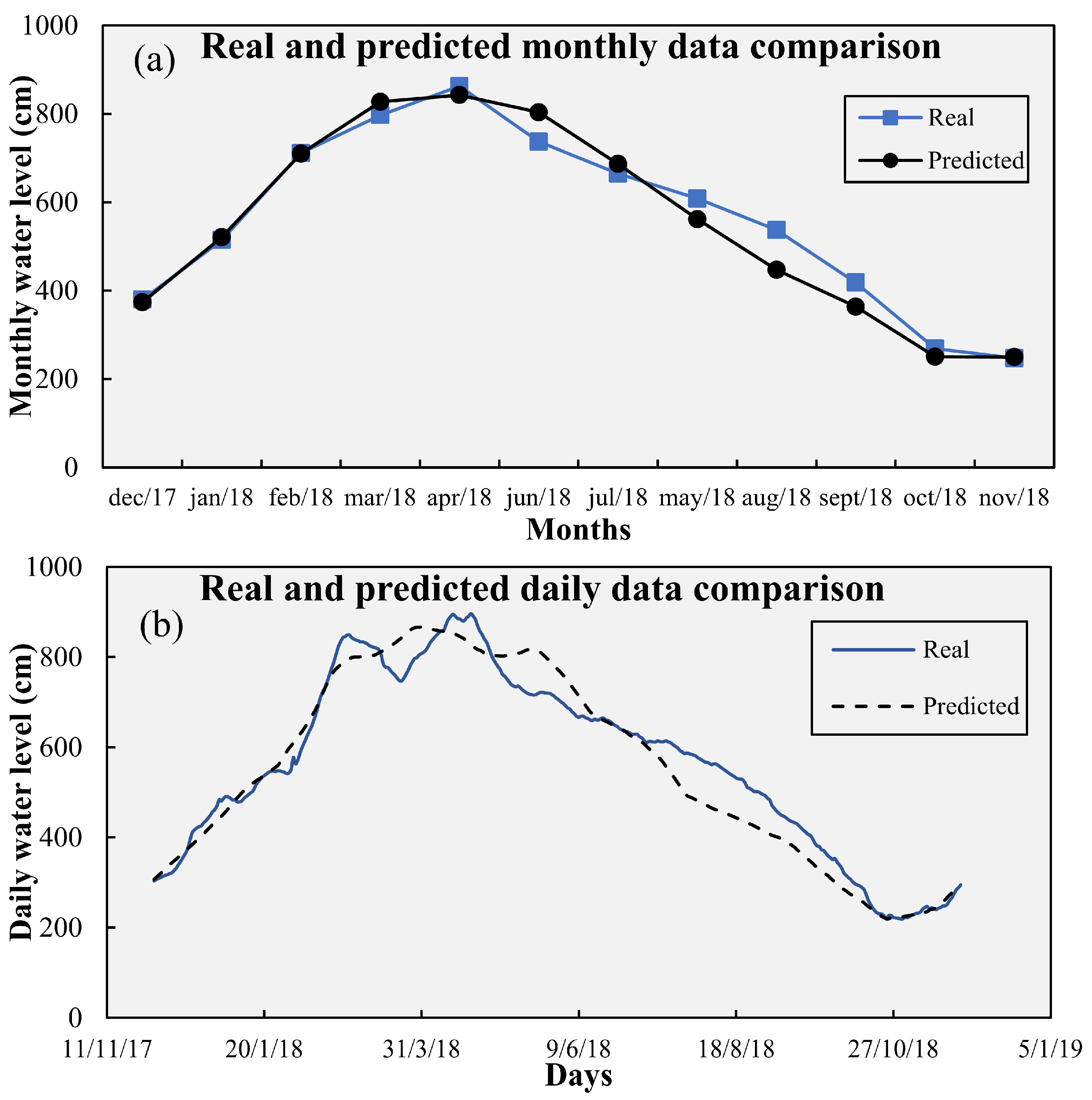
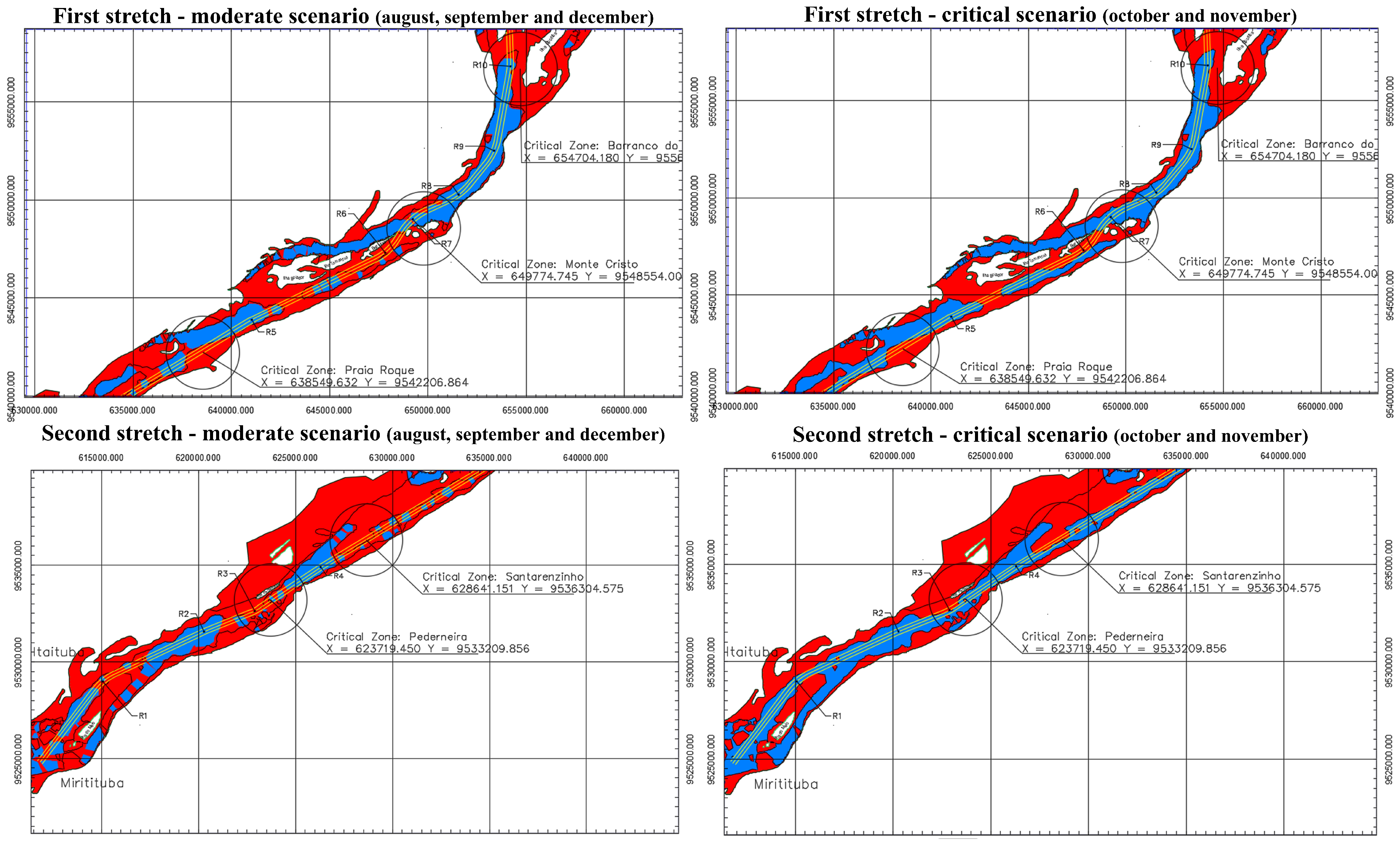
| Step | Description |
|---|---|
| Water level prediction | Present a stochastic model for predicting water level variability using a machine learning approach with perceptron neural networks and the backpropagation algorithm. |
| Vessel’s hydrostatic modeling | Model the vessel to measure hydrostatic characteristics for assessing the maximum load capacities of the analyzed convoy formation. Generate and evaluate these properties, which are intrinsic variables to the vessels. |
| Planialtimetric conditions definition | Use the developed and patented software “DimChannel” [48] to calculate the width values in straight and curved sections for safe navigation on the waterway. |
| Load capacity definition | Apply artificial neural networks to generate water depth values, which allow for the calculation of the gross tonnage values of the convoy based on the calculated under-keel clearance. |
| Model | Model Structure | R2 |
|---|---|---|
| MLP1 | [5] | 0.4135 |
| MLP2 | [6,1] | −0.0213 |
| MLP3 | [3,6,3] | 0.4178 |
| MLP4 | [2,6,6] | −0.0301 |
| MLP5 | [4,6] | −0.0301 |
| MLP6 | [1,2,1] | −0.0304 |
| MLP7 | [6,2] | −0.0291 |
| MLP8 | [3,6,2] | 0.4123 |
| MLP9 | [5,6,6,1] | −0.0285 |
| MLP10 | [5] | 0.8634 |
| MLP11 | [1] | −0.0288 |
| MLP12 | [2,6,1] | −0.0311 |
| MLP13 | [1,6,6] | 0.4171 |
| MLP14 | [1,4,5,4] | 0.5242 |
| MLP15 | [5,1] | −0.0287 |
| MLP16 | [6,4] | 0.8761 |
| MLP17 | [3] | 0.8498 |
| MLP18 | [5] | 0.8552 |
| MLP19 | [3,1] | −0.0325 |
| MLP20 | [1,5,3,2] | −0.0299 |
| Best ANN Model | |
|---|---|
| Hyperparameter | Perceptron |
| Activation function | ReLu |
| Epochs | 1000 |
| Learning rate | 0.01 |
| Batch size | 32 |
| Characteristics | Pusher | Box Barge | Raked Barge |
|---|---|---|---|
| Overall length | - | 60.96 m | 60.96 m |
| Molded breadth | 12.00 m | 10.67 m | 10.67 m |
| Molded depth | 3.50 m | 4.27 m | 4.27 m |
| Design draft | 2.20 m | 3.50 m | 3.50 m |
| Lightweight | 164.2 t | 283 t | 275 t |
| Deadweight | 81.42 t | 2221.35 t | 2100.91 t |
| Amount | 1 | 15 | 10 |
| Month | Depth (m) | Squat (m) | UKC (m) | Free Depth (m) | Draft (m) | Box Cap. (t) | Raked Cap. (t) | Convoy Cap. (ton) | Cargo % |
|---|---|---|---|---|---|---|---|---|---|
| December 2017 | 3.74 | 0.38 | 0.90 | 2.84 | 2.84 | 1558.69 | 1442.37 | 37,804.06 | 68.8% |
| January 2018 | 5.21 | 0.36 | 0.90 | 4.31 | 3.86 | 2221.16 | 2077.52 | 54,092.70 | 98.5% |
| February 2018 | 7.10 | 0.26 | 0.90 | 6.20 | 3.86 | 2221.16 | 2077.52 | 54,092.70 | 98.5% |
| March 2018 | 8.27 | 0.23 | 0.90 | 7.37 | 3.86 | 2221.16 | 2077.52 | 54,092.70 | 98.5% |
| April 2018 | 8.42 | 0.22 | 0.90 | 7.52 | 3.86 | 2221.16 | 2077.52 | 54,092.70 | 98.5% |
| June 2018 | 8.04 | 0.23 | 0.90 | 7.14 | 3.86 | 2221.16 | 2077.52 | 54,092.70 | 98.5% |
| July 2018 | 6.86 | 0.27 | 0.90 | 5.96 | 3.86 | 2221.16 | 2077.52 | 54,092.70 | 98.5% |
| May 2018 | 5.61 | 0.33 | 0.90 | 4.71 | 3.86 | 2221.16 | 2077.52 | 54,092.70 | 98.5% |
| August 2018 | 4.47 | 0.39 | 0.90 | 3.57 | 3.57 | 2036.59 | 1900.56 | 49,554.54 | 90.2% |
| September 2018 | 3.64 | 0.38 | 0.90 | 2.74 | 2.74 | 1494.52 | 1380.83 | 36,226.08 | 65.9% |
| October 2018 | 2.50 | 0.35 | 0.90 | 1.60 | 1.60 | 757.77 | 674.47 | 18,111.26 | 33.0% |
| November 2018 | 2.49 | 0.35 | 0.90 | 1.59 | 1.59 | 751.11 | 668.08 | 17,947.42 | 32.7% |
Disclaimer/Publisher’s Note: The statements, opinions and data contained in all publications are solely those of the individual author(s) and contributor(s) and not of MDPI and/or the editor(s). MDPI and/or the editor(s) disclaim responsibility for any injury to people or property resulting from any ideas, methods, instructions or products referred to in the content. |
© 2024 by the authors. Licensee MDPI, Basel, Switzerland. This article is an open access article distributed under the terms and conditions of the Creative Commons Attribution (CC BY) license (https://creativecommons.org/licenses/by/4.0/).
Share and Cite
Campos Filho, L.C.P.; Figueiredo, N.M.d.; Blanco, C.J.C.; Tobias, M.S.G.; Afonso, P. Machine Learning for the Sustainable Management of Depth Prediction and Load Optimization in River Convoys: An Amazon Basin Case Study. Sustainability 2024, 16, 8517. https://doi.org/10.3390/su16198517
Campos Filho LCP, Figueiredo NMd, Blanco CJC, Tobias MSG, Afonso P. Machine Learning for the Sustainable Management of Depth Prediction and Load Optimization in River Convoys: An Amazon Basin Case Study. Sustainability. 2024; 16(19):8517. https://doi.org/10.3390/su16198517
Chicago/Turabian StyleCampos Filho, Lúcio Carlos Pinheiro, Nelio Moura de Figueiredo, Cláudio José Cavalcante Blanco, Maisa Sales Gama Tobias, and Paulo Afonso. 2024. "Machine Learning for the Sustainable Management of Depth Prediction and Load Optimization in River Convoys: An Amazon Basin Case Study" Sustainability 16, no. 19: 8517. https://doi.org/10.3390/su16198517
APA StyleCampos Filho, L. C. P., Figueiredo, N. M. d., Blanco, C. J. C., Tobias, M. S. G., & Afonso, P. (2024). Machine Learning for the Sustainable Management of Depth Prediction and Load Optimization in River Convoys: An Amazon Basin Case Study. Sustainability, 16(19), 8517. https://doi.org/10.3390/su16198517







